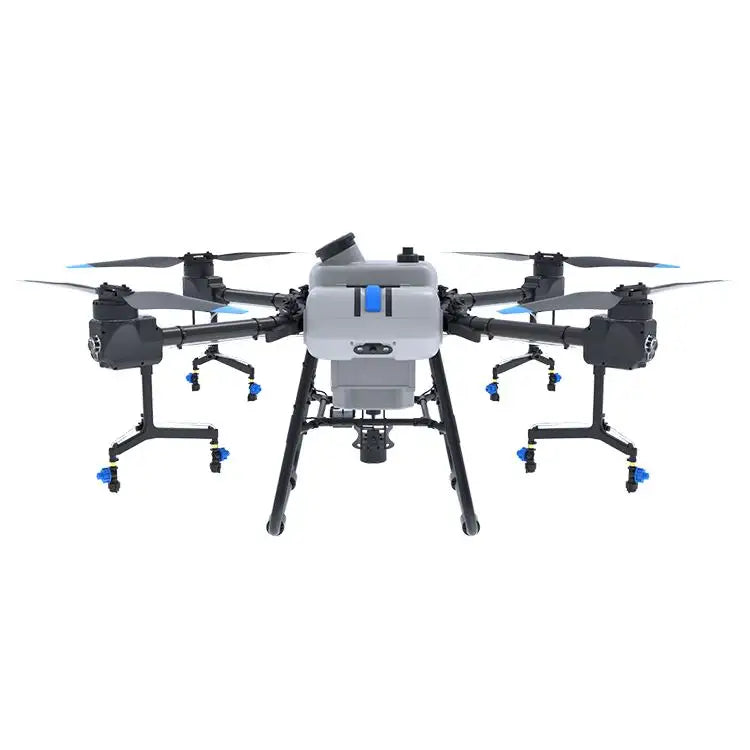The modern landscape of farming is experiencing a major transformation thanks to advances in technology that will improve efficiency and increase productivity. One of these breakthroughs is that agriculture drones have emerged as game-changers specifically in the area of crop management. They are specially designed for agricultural use and offer farmers an opportunity to reduce cost of labor and improve precision when spraying, and as and increase the yield of their crops.
The Rise of Agriculture Drones
Drones for agriculture, commonly referred to as sprayer drones, are fast become important tools in the farming industry. They have the latest technology that allow them to complete a wide range of tasks like spraying pesticides or herbicides on large areas of crops. Agriculture drones are extremely precise. They spray precisely the quantity of product in the area where it’s needed. This means less waste and has a minimal impact on the environment.

Agriculture drones are an excellent asset for large-scale farming operations where manually spraying crops may require a lot of time and effort. With the ability to cover extensive areas quickly and efficiently, drones help farmers to save time and energy, allowing them to focus on other critical aspects of managing their farms.
The 20L Drone: Precision and Efficiency
The 20L Agriculture Drone is a versatile and efficient sprayer drone designed for farms with crop areas ranging from 200 to 1,000 acres. This drone is equipped with tank that has a capacity of 20 liters that makes it ideal for medium-sized farms who need to spray often, but don’t need the capacity of a larger drone.
One of the main aspects of the 20L Agriculture Drone is its lightweight design, which enhances maneuverability and reduces the strain on the drone’s power source. The arms that fold up make it easy to transport and set up the drone in the field. This feature is especially useful for farmers who must quickly travel between different areas of their property.
The 20L Agriculture Drone features a medicine container and battery system which can be easily removed, which allows for quicker refilling. The medical box’s quick-release feature and battery system guarantees minimal interruptions, which allow farmers to ensure a steady schedule of spraying. It also features FPV as well as radar cameras that offer immediate feedback and improve spraying precision. These cameras are of particular advantage to those who are new to the drone as they offer improved control and monitor capabilities.
The 30L drone for agriculture The 30L drone is powered and has the capacity to support large-scale farms
For larger farming operations, the 30L Agriculture Drone provides the perfect solution. With its capacity of 30 liters the drone that sprays made to handle the demands of huge agricultural areas, delivering an even greater payload than the 20L model. This tank’s capacity is increased, allowing drones to cover an increased area in less time.
The 30L Agriculture Drone has a lightweight and strong frame that decreases the dead weight, but still maintaining high strength and a resistance to impacts. The drone is built to withstand the demands of large-scale farming operations where durability is essential. The 30L Agriculture Drone is, just like the 20L model, comes with foldable arms and a pluggable system to the tank and is portable.
30L’s capability to fly in a variety of modes, including autonomous flight, is among its most distinctive features. It can be programmed for flights to ensure accurate and consistent spraying across large fields. Farmers who are responsible for several tasks may find the auto mode very beneficial as they can let their drone do their tasks with no supervision.
What are the implications of Drone Sprayers on Modern Farming?
Agriculture drones have made a huge impact on agriculture and particularly the 20L and 30L model. These drones reduce the cost of operation by automatizing the spraying process. The precision of these drones also helped improve plant health and better crop management that resulted in better yields.
In addition to their economic benefits, agricultural drones also contribute to environmental sustainability. Sprayer drones reduce the amount of pesticides, fertilizers, and other chemicals utilized around the globe.
The article’s conclusion is:
The future of farming is drones in agriculture such as 20L and 30L sprayer drones. With their cutting-edge capabilities in terms of efficiency, speed, and other features they will help farmers overcome the challenges in modern agricultural. A decision to invest in an agriculture drone, whether you manage the operation in a medium size or massive one, could lead to significant improvements regarding productivity as well as cost savings and environmental management. As technology continues to advance, agriculture drones will undoubtedly play a greater role in the sustainable growth of the agriculture industry.
